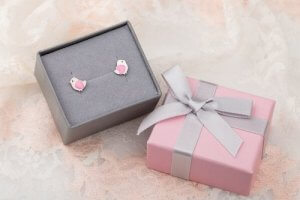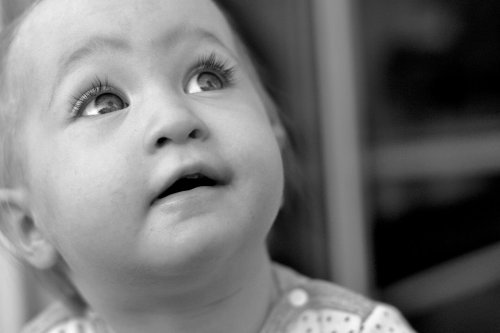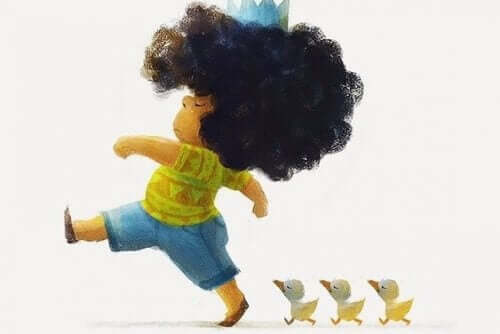Doubts Before Piercing Your Baby's Ears


Reviewed and approved by the doctor Nelton Ramos
It’s normal to have doubts before piercing your baby’s ears. Although this action is quite common, it involves performing an aesthetic intervention that will require mild care for possible physical discomfort.
With that in mind, many people question this practice because of its risks to the child’s health. It’s clear that doubts regarding this issue have two points of view: medical and ethical.
Hence, we want to address this topic to clarify your concerns. This way, you’ll be able to make the best decision as to whether or not piercing your baby’s ears is a good idea.
Doubts before piercing your baby’s ears

The doubts we get about piercing a baby’s ears generally have to do with the possible health risks. There’s also the hygiene that is required, how the procedure is performed, and who should do it.
Last but not least, the fact that the child will feel pain or discomfort during and after the perforations is a matter of concern.
The procedure
Piercing a girl’s ear lobes for aesthetic reasons is a very common procedure in Latin America and Spain. This aesthetic intervention is performed a few hours or days after the birth of the baby.
It’s assumed that since they’re so small, they won’t remember the pain or discomfort of the perforation. Another argument in favor of this practice is that the girl won’t be able to take off the earrings with her hands.

According to several international pediatric societies, ear piercing doesn’t represent any risk as long as it’s done in proper conditions. That is, both the area and the earings should be sanitized, regardless of whether they’re made of gold or a hypoallergenic material.
Likewise, it’s advisable for the girl to be at least 2 years old and to already have all the necessary vaccines. Without a doubt, a pediatric doctor or nurse should perform the procedure. They’ll sterilize the earring and area, and put local anesthesia on to make the perforation hurt as little as possible.
Treatment after the perforation
To ensure that the holes don’t close, the earrings must remain in the little girl’s lobe for at least six weeks. Therefore, once the procedure is complete, you have to make sure you provide the child with the following safety measures:
- Always wash your hands very well before touching your baby’s lobe.
- You must apply alcohol once a day.
- Gently rotating the earrings every day is important.
- Possibly, you should apply some adjuvant cream to help accelerate the wound healing process. That ointment should be prescribed by the pediatrician who performed the procedure.
Questions about whether to pierce a girl’s ears

Nowadays, movements in favor of children’s freedoms and rights express their disagreement with performing aesthetic procedures on children. These groups consider them to be unnecessary practices that violate the rights of the child.
Their main argument is that while the act doesn’t represent a great health risk, decisions about their appearance are being made without their say. They believe that the girl is the one who should decide how she wants to look. We must keep in mind that these demands also arise as a result of the social recognition of various gender identities that exist.
Taking into account the diversity of gender identities that exist, every day, people seek to give individuals the freedom to choose the gender with which they feel identified and not assign it beforehand based solely on their physical characteristics at birth.
Before wrapping up, we want to insist that if your little girl has a fever or if the lobe area swells up or reddens too much after the perforation, you should visit the pediatrician immediately.
It’s normal to have doubts before piercing your baby’s ears. Although this action is quite common, it involves performing an aesthetic intervention that will require mild care for possible physical discomfort.
With that in mind, many people question this practice because of its risks to the child’s health. It’s clear that doubts regarding this issue have two points of view: medical and ethical.
Hence, we want to address this topic to clarify your concerns. This way, you’ll be able to make the best decision as to whether or not piercing your baby’s ears is a good idea.
Doubts before piercing your baby’s ears

The doubts we get about piercing a baby’s ears generally have to do with the possible health risks. There’s also the hygiene that is required, how the procedure is performed, and who should do it.
Last but not least, the fact that the child will feel pain or discomfort during and after the perforations is a matter of concern.
The procedure
Piercing a girl’s ear lobes for aesthetic reasons is a very common procedure in Latin America and Spain. This aesthetic intervention is performed a few hours or days after the birth of the baby.
It’s assumed that since they’re so small, they won’t remember the pain or discomfort of the perforation. Another argument in favor of this practice is that the girl won’t be able to take off the earrings with her hands.

According to several international pediatric societies, ear piercing doesn’t represent any risk as long as it’s done in proper conditions. That is, both the area and the earings should be sanitized, regardless of whether they’re made of gold or a hypoallergenic material.
Likewise, it’s advisable for the girl to be at least 2 years old and to already have all the necessary vaccines. Without a doubt, a pediatric doctor or nurse should perform the procedure. They’ll sterilize the earring and area, and put local anesthesia on to make the perforation hurt as little as possible.
Treatment after the perforation
To ensure that the holes don’t close, the earrings must remain in the little girl’s lobe for at least six weeks. Therefore, once the procedure is complete, you have to make sure you provide the child with the following safety measures:
- Always wash your hands very well before touching your baby’s lobe.
- You must apply alcohol once a day.
- Gently rotating the earrings every day is important.
- Possibly, you should apply some adjuvant cream to help accelerate the wound healing process. That ointment should be prescribed by the pediatrician who performed the procedure.
Questions about whether to pierce a girl’s ears

Nowadays, movements in favor of children’s freedoms and rights express their disagreement with performing aesthetic procedures on children. These groups consider them to be unnecessary practices that violate the rights of the child.
Their main argument is that while the act doesn’t represent a great health risk, decisions about their appearance are being made without their say. They believe that the girl is the one who should decide how she wants to look. We must keep in mind that these demands also arise as a result of the social recognition of various gender identities that exist.
Taking into account the diversity of gender identities that exist, every day, people seek to give individuals the freedom to choose the gender with which they feel identified and not assign it beforehand based solely on their physical characteristics at birth.
Before wrapping up, we want to insist that if your little girl has a fever or if the lobe area swells up or reddens too much after the perforation, you should visit the pediatrician immediately.
All cited sources were thoroughly reviewed by our team to ensure their quality, reliability, currency, and validity. The bibliography of this article was considered reliable and of academic or scientific accuracy.
- Arístegui, B. (2002). “Alergia a los hongos”. En José Pontón, y otros (eds.): Hongos y actinomicetos alergénicos. Bilbao: Berekintza, pp. 10-18.
- Rivière, J. (2007). “La femineidad como máscara”, Athenea Digital. Revista de Pensamiento e Investigación Social, 11: 23-28.
- Tubert, S. (2003). Del sexo al género: los equívocos de un concepto. Madrid: Cátedra.
This text is provided for informational purposes only and does not replace consultation with a professional. If in doubt, consult your specialist.








